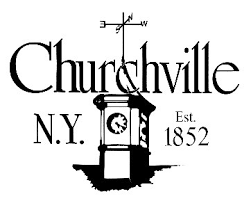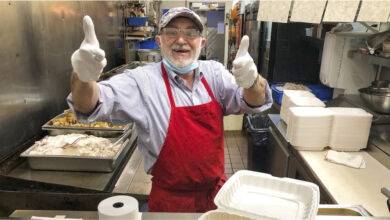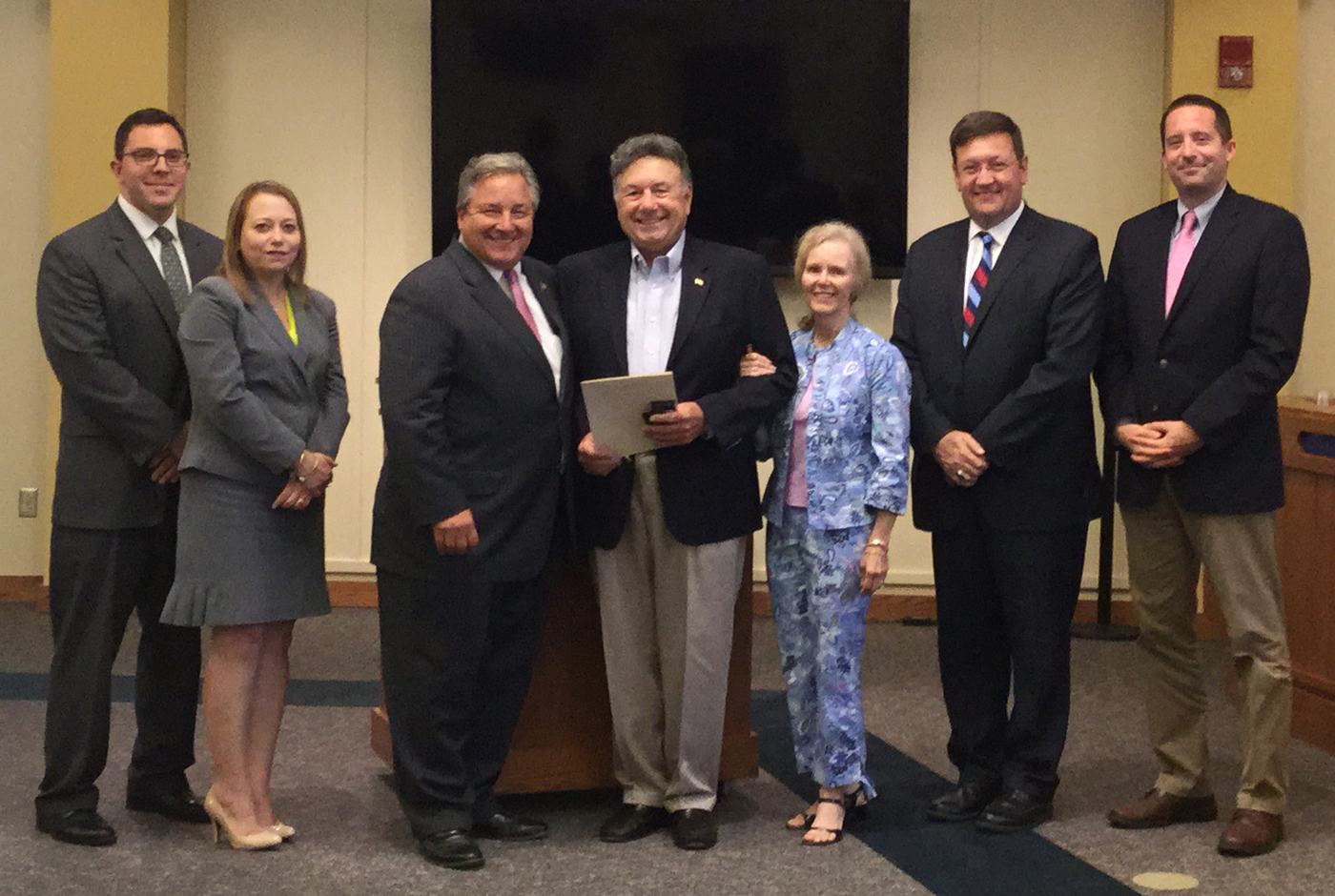Hamlin’s new library a dream come true for many
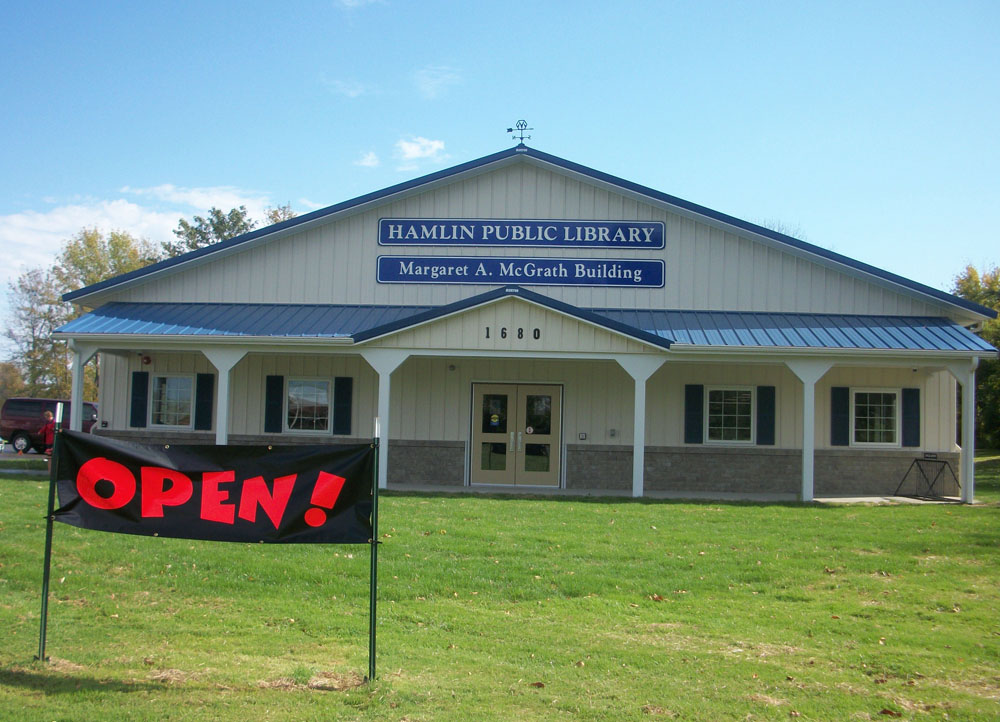
It’s 11 a.m. on a Monday morning and the Hamlin Public Library is a flurry of activity: Children gather with parents and caregivers in the conference room for programming; a steady stream of patrons come and go, some enjoying the newspaper and periodicals, others making use of computers, while others seek information at the circulation desk. Library staff is busy replacing returned materials to the shelves and assisting patrons.
The scene is a dream come true for supporters of the library. After years of searching for a permanent home and a litany of financial and political challenges, the new Hamlin Public Library is now a reality.
The facility – housed in the brand new 5,940 square feet Margaret A. McGrath Building – sits directly south of the Hamlin Town Hall at 1680 Lake Road (Route 19). The doors opened September 22 for patrons and a grand opening celebration is planned for Saturday, October 25 from 10 a.m. to noon.
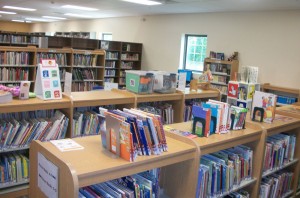
“We hit the ground running,” says Sue Evans, Library Board of Trustees president. “There were 150-200 people the first day.”
The opening of the library in a permanent location has been like “an out of body experience,” Evans says, and remembers how the library began in 1999, in one small room provided by the town that had functioned as the skating rink warm-up room.
Later, the library moved to a storefront in the IGA Plaza at the southern border of the town. In 2004 and again in 2006 it expanded into additional storefronts. By the time of this year’s move, the library sprawled along four former storefronts at the plaza.
In contrast, the new library provides a large, welcoming, light-filled open space and is a fully functioning facility that Evans believes has quickly become the heart of the community.
“People will now know what libraries are,” she says.
The new Hamlin Library was made possible through a series of events which has spanned roughly 10 years and which saw more than its share of challenges.
In 2004, the library received a bequest from the estate of Margaret McGrath for construction of a permanent home.
The sum was substantial, but, “was useless under the current conditions,” Evans says. It simply wasn’t enough and utilizing town money for construction went nowhere because of the tax issue, Evans says.
The Board of Trustees did as much work as they could, but the construction project was put on hold. “We were losing ground,” Evans says.
The situation changed dramatically in 2009, when Kay Hughes-Dennett came on board as library director. “It was like an angel fluttering down out of heaven,” Evans remembers.
Hughes-Dennett told trustees it was very possible to move the project forward – “We can get a matching grant,” she said.
“We stood there stunned,” Evans recalls. Trustees had not considered the possibility of seeking grant funds to supplement the bequest.
Hughes-Dennett plunged head-first into the process of researching costs and amassing the necessary documentation to apply for grant money.
“Much time and legwork was invested by Kay,” Evans says.
After additional work to find a location the town provided the site south of the town hall for the library and when word came that the library had received a $466,000 grant to go along with the $600,000 bequest, support from the community for the project continued to grow.
“People wanted their library,” Evans explains, and adds that even former residents who heard about the project on Facebook expressed support.
Then the process stalled again when it appeared the new library might not make its way through the town support board approval process. Concerns were expressed over parking lot design and, particularly over safety issues and there were issues with existing zoning regulations. During the late winter and early spring of 2013, the town board was advised by its attorney to revisit wording in the town’s zoning code. Evans says a clause was added, which made the wording more precise and which allowed the town board to give its approval. The project was allowed to move forward.
Ground was broken on a cold and snowy mid-December day late last year. The completed building now sits slightly shifted back from where originally planned. Parking is along the north side of the building, but Evans says eventually, there will be additional parking in front. She adds that the town provided much support and assistance during the construction process.
The library is in line to receive a $100,000 state grant obtained with the help of State Senator Joe Robach, to help with the cost of the parking lot and with new shelving, Evans says. Last year, Robach helped to obtain $30,000 in grant funds which assisted with technology costs.
The new library has received a warm welcome from the community. Those who have visited during its first few weeks have been impressed, Evans says. “They look around and say, ‘Wow’ – even some nay-sayers have been in and said it’s wonderful,” Evans says.
The bequest and state grants also mean there is no mortgage, Evans notes. The library no longer needs to pay commons fees and rent as it did when housed at the plaza.
The new library provides ample room for community activities and Evans says she envisions residents’ artwork decorating the walls. She hopes the library will be a place for residents to come together and get to know each other.
“Libraries are the living rooms of communities,” she says. “People like to come here and hang out.” The library is fitted with comfortable reading chairs and tables where patrons can sit and enjoy materials as well as accomplish work.
The new library will move Hamlin’s “educational potential” forward, Evans says, and she foresees many opportunities for residents at the library – perhaps discussion groups, knitting and craft groups. “Whatever anybody can envision a group of people getting together to do,” Evans says and adds that already “seniors play cards on Wednesday in the conference room.”
Because the town is split between three school districts, the library will play a vital roll in bringing residents together, to enable socialization as a community, she adds.
“It can be used every single day of the week for everyone. Every resident is encouraged to come and learn who is in their community,” Evans says.
K. Gabalski photos


